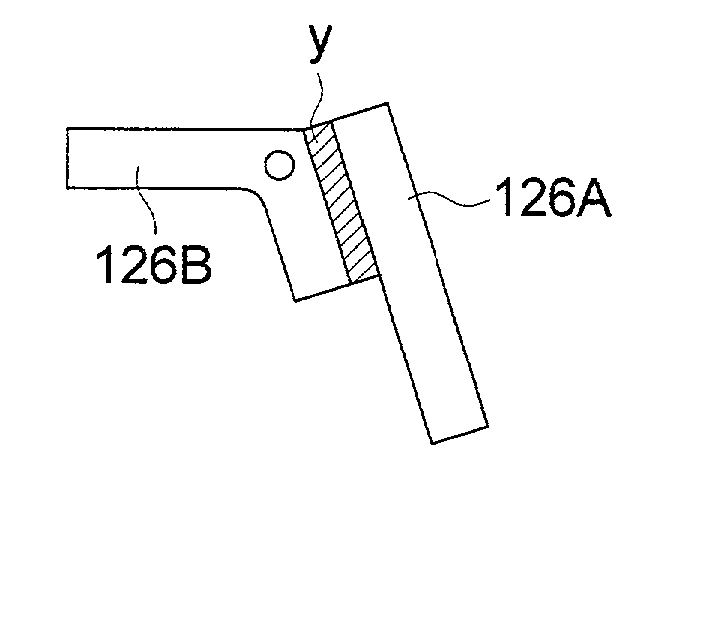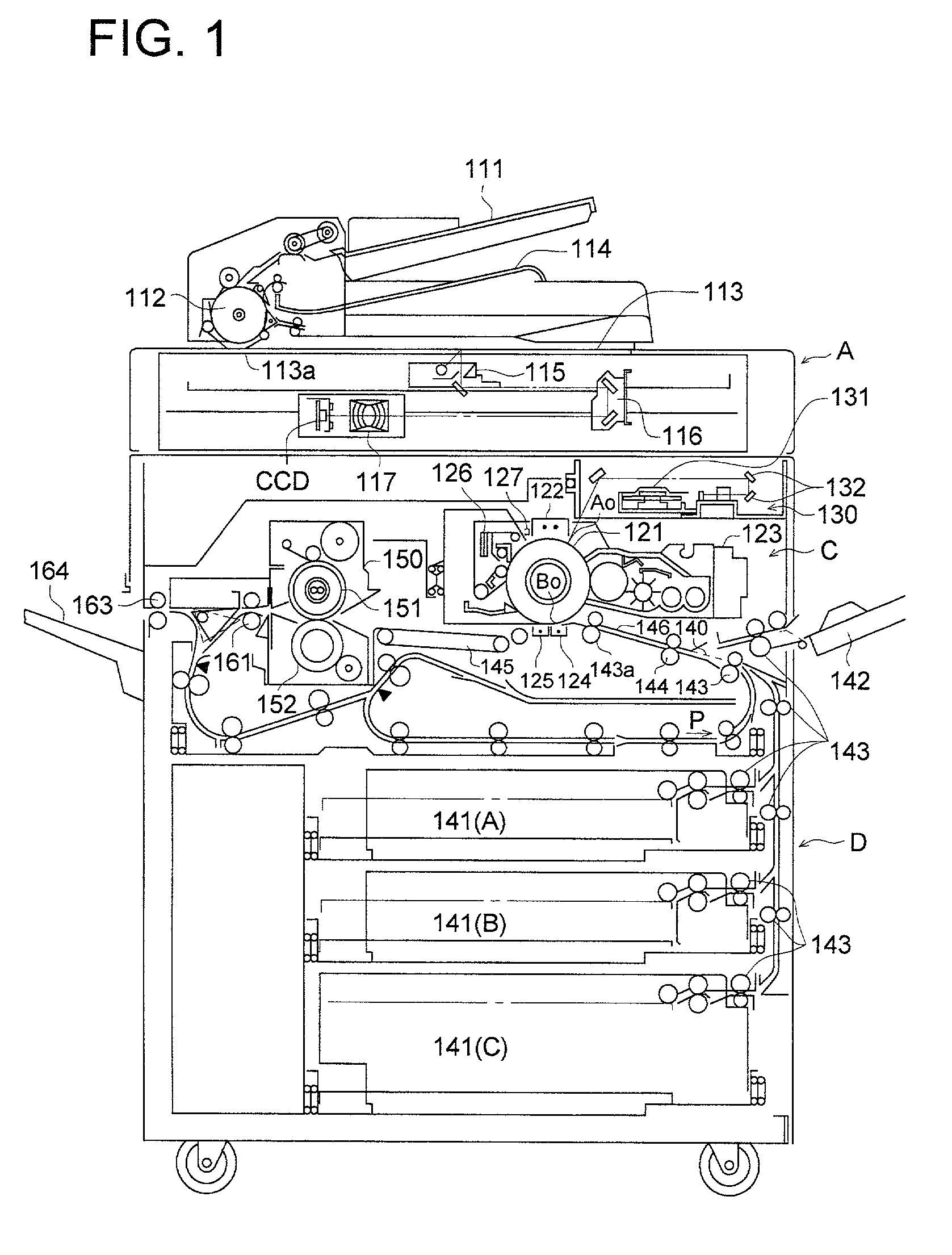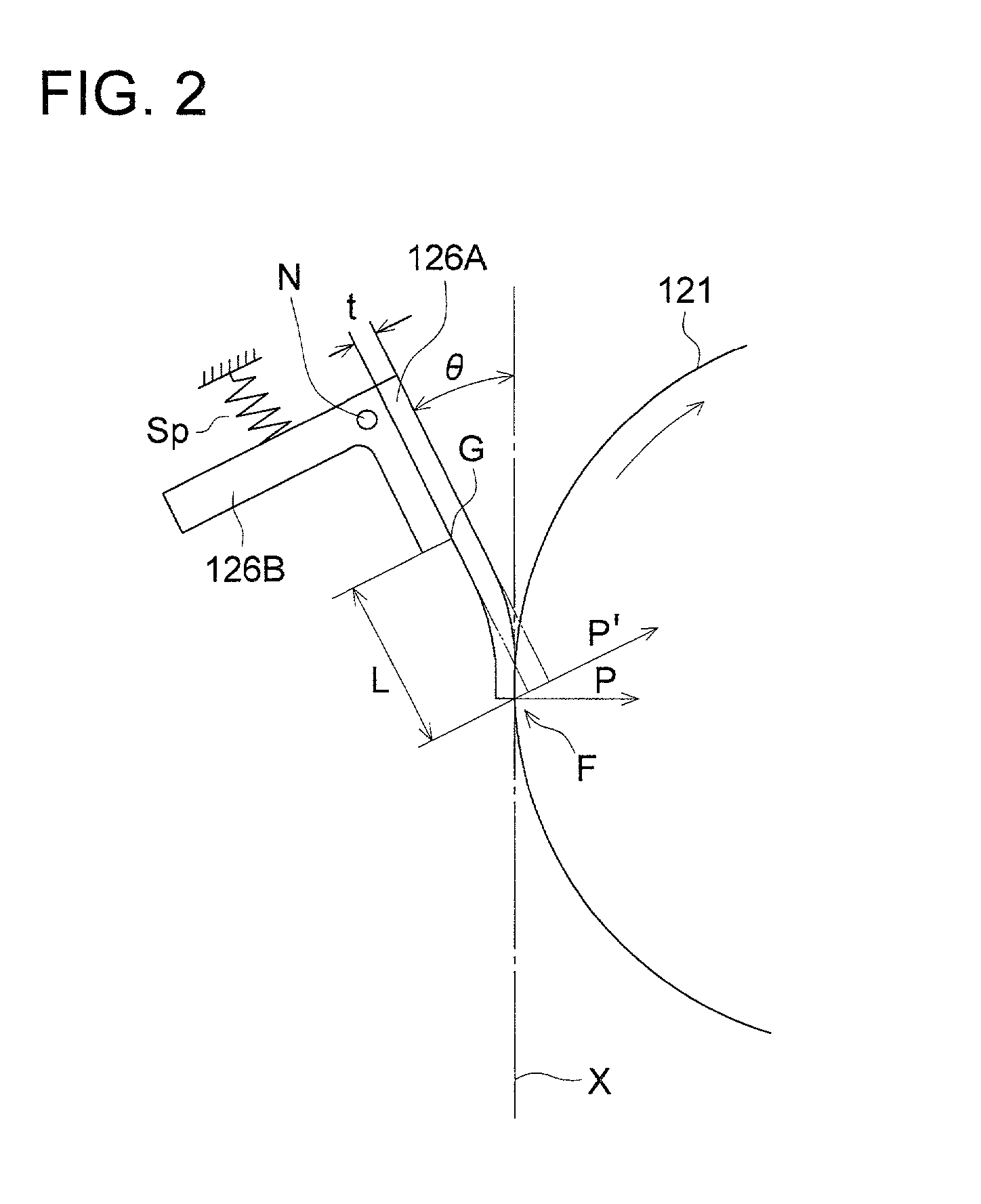Toner cleaning device, image forming method using the device, and image forming apparatus using the device
a cleaning device and toner technology, applied in the field of toner cleaning device, image forming method using the device, image forming apparatus using the device, can solve the problems of difficult to completely remove the residual toner on the photoreceptor, mechanical weakness of the organic photoreceptor, degradation as well as abrasion, etc., to achieve excellent cleaning performance, excellent electrophotographic image, and no image defects
- Summary
- Abstract
- Description
- Claims
- Application Information
AI Technical Summary
Benefits of technology
Problems solved by technology
Method used
Image
Examples
example 1
[0261] Insufficient residual toner removal, blade curl-under, blade noise, and image unevenness were evaluated employing a digital copier, Konica 7050, manufactured by Konica Corp., basically comprising the image forming process (including processes of corona charging, laser exposure, reversal development, electrostatic transfer, claw separation, and cleaning utilizing a cleaning blade) described in FIG. 1, in which the joined state of the cleaning blade with the supporting member, the damping material adhesion position, the blade contact load, and the contact angle combinations were set as shown in Table 2. During the evaluation, an original document, having equal quarters of a text image at a pixel ratio of 7 percent, a gray scale image, a solid white image, and a solid black image, was continuously copied onto A4 paper sheets for 90 minutes at a rate of 50 sheets / minute at normal temperature and normal humidity (24.degree. C. and 60 percent relative humidity). However, prior to t...
example 2
[0299] Evaluation was carried out in the same manner as Example 1, except that conditions of the cleaning blade, the damping material, the photoreceptor, the developer, and the like were varied as described below.
[0300] Cleaning blade: hardness of 70 degrees, impact resilience of 50 percent, thickness of 2.5 mm, and free length of 5 mm
[0301] Damping material: Scotch Damp SJ2015X-Type 112 (manufactured by Sumitomo 3M Limited.) (having a maximum loss factor .eta..sub.max of approximately 1.0)
[0302] Photoreceptor: P2
[0303] Developer: 2 (Toner: T2)
[0304] Other cleaning conditions are:
[0305] Cleaning blade contact angle: described in Table 3
[0306] Cleaning blade load (in N / m): described in Table 3
[0307] Other conditions were same as Example 1.
[0308] Table 3 shows the results.
3 TABLE 3 2A 2B 2C 2D 2E 2F 2G Joined in in in in in in in State of para- para- para- para- para- para- series Cleaning llel llel llel llel llel llel Blade with Supporting Member Damping present present present prese...
example 3
[0310] Evaluation was carried out under the same conditions as Example 1, except that the photoreceptor and the developer were replaced with those described below and the type of the damping material were was varied as shown in Table 4.
[0311] Photoreceptor: P2
[0312] Developer: 2 (Toner: T2)
4 TABLE 4 3A 3B 3C Joined State of in parallel in parallel in parallel Cleaning Blade with Supporting Member Damping Material present present present Adhesion Section FIG. 3 (a) FIG. 3 (a) FIG. 3 (a) Type of LR-A VEM 113 LR-V Damping manufactured by manufactured by manufactured Material Bridgestone Sumitomo 3M by Bridgestone Corp. Limited Corp. S.sub.1 (in mm.sup.2) 3060 3060 1850 S.sub.2 (in mm.sup.2) 6120 6120 6120 S.sub.1 / S.sub.2 0.5 0.5 0.5 Cleaning Blade 20 20 20 Load (in N / m) Cleaning Blade 15 15 20 Contact Angle .theta. (in degrees) Insufficient A A A Residual Toner Removal Blade Curl-Under A A A Vibration 130 130 140 Amplitude (in .mu.m)
[0313] As can clearly be seen from Table 4, Examples ...
PUM
 Login to View More
Login to View More Abstract
Description
Claims
Application Information
 Login to View More
Login to View More - R&D
- Intellectual Property
- Life Sciences
- Materials
- Tech Scout
- Unparalleled Data Quality
- Higher Quality Content
- 60% Fewer Hallucinations
Browse by: Latest US Patents, China's latest patents, Technical Efficacy Thesaurus, Application Domain, Technology Topic, Popular Technical Reports.
© 2025 PatSnap. All rights reserved.Legal|Privacy policy|Modern Slavery Act Transparency Statement|Sitemap|About US| Contact US: help@patsnap.com



